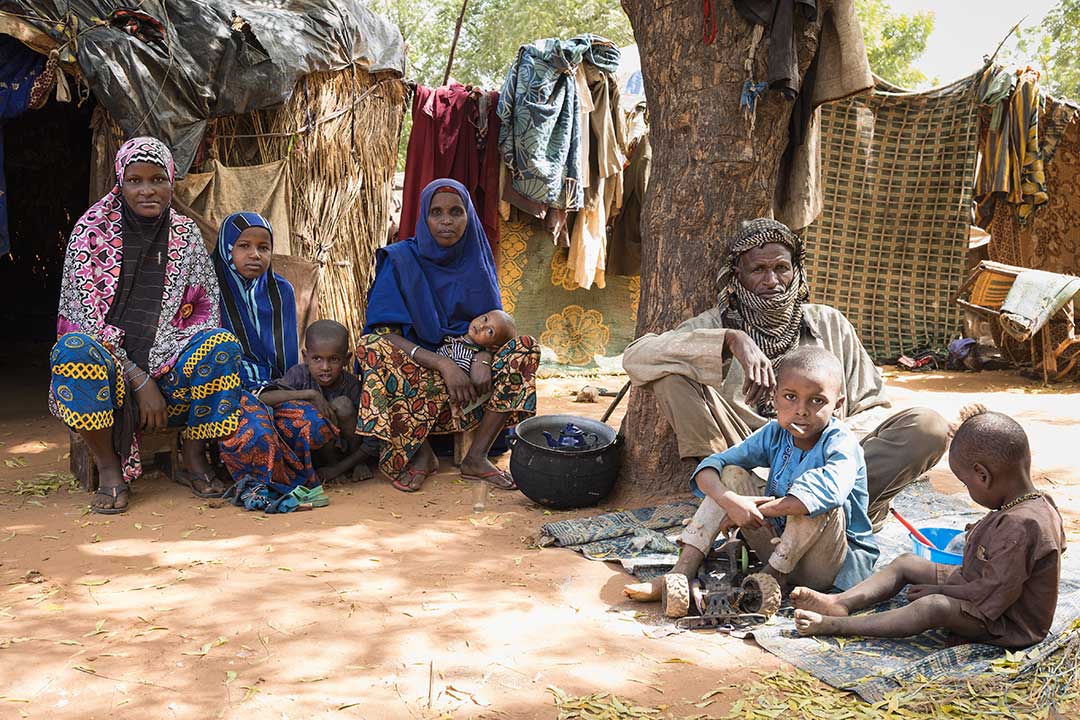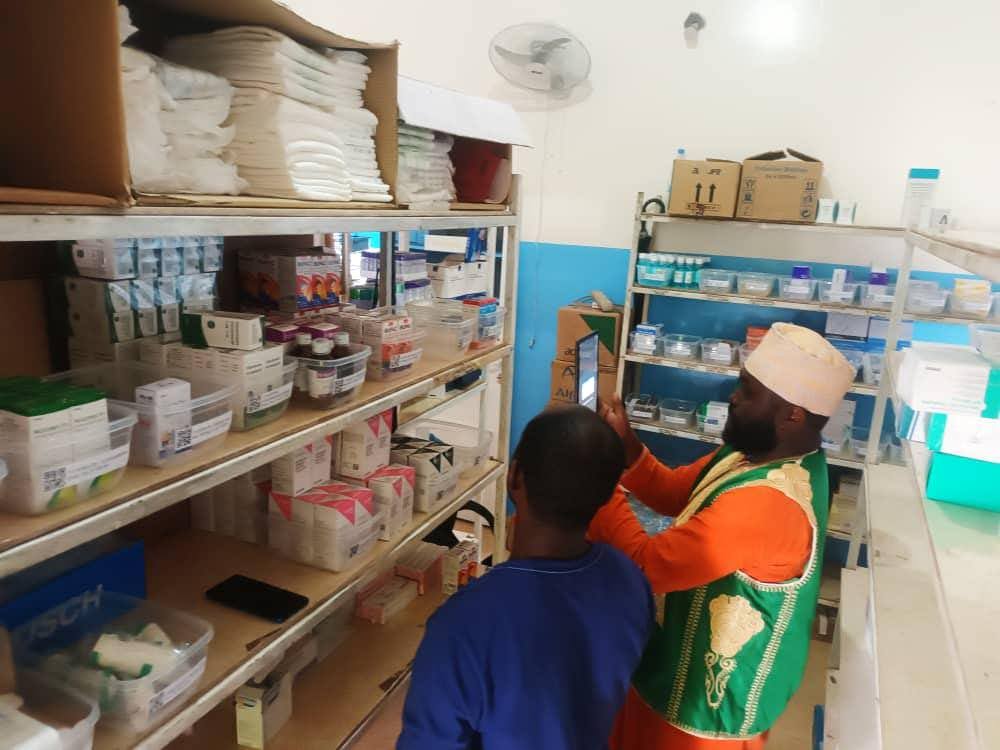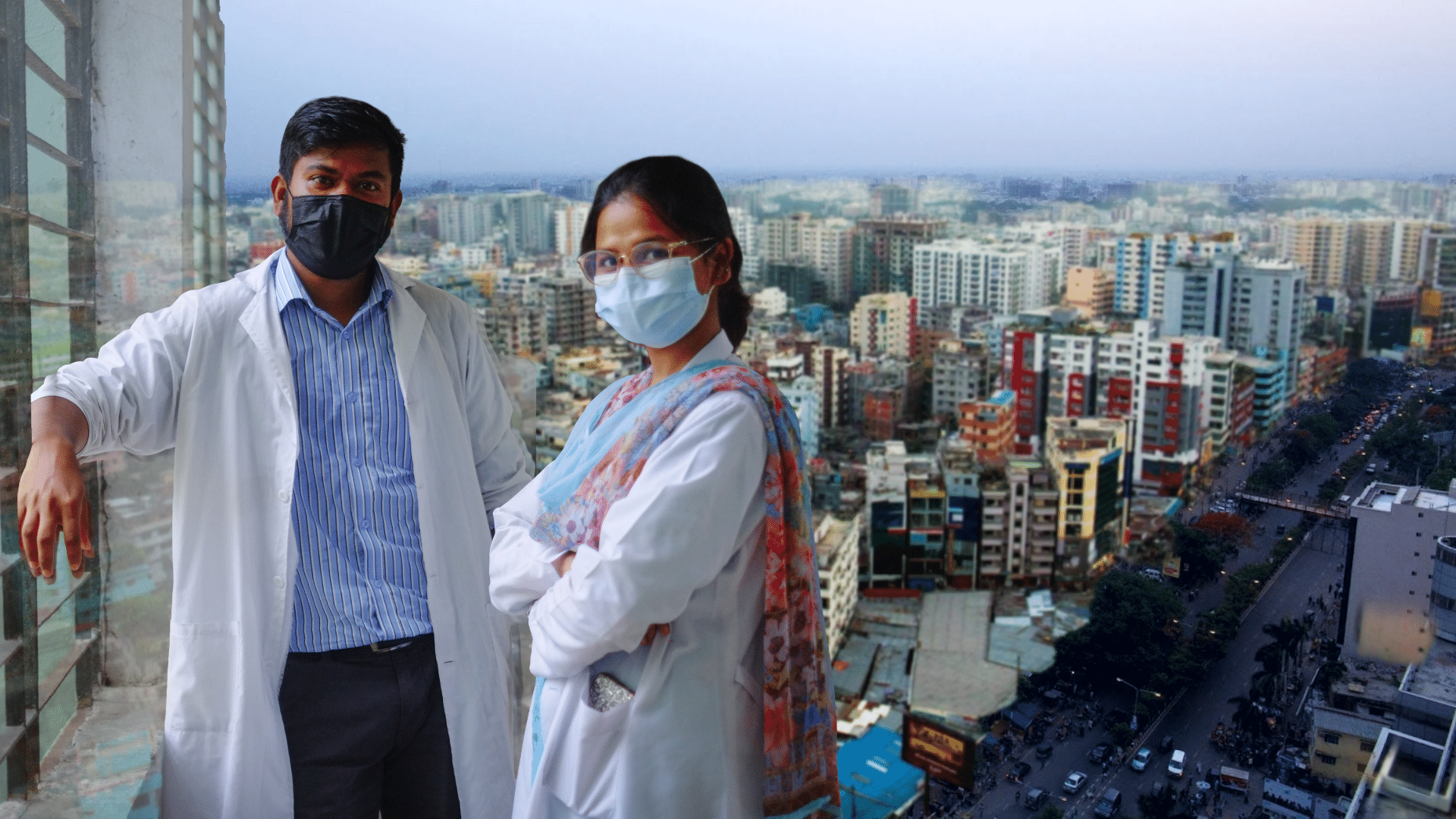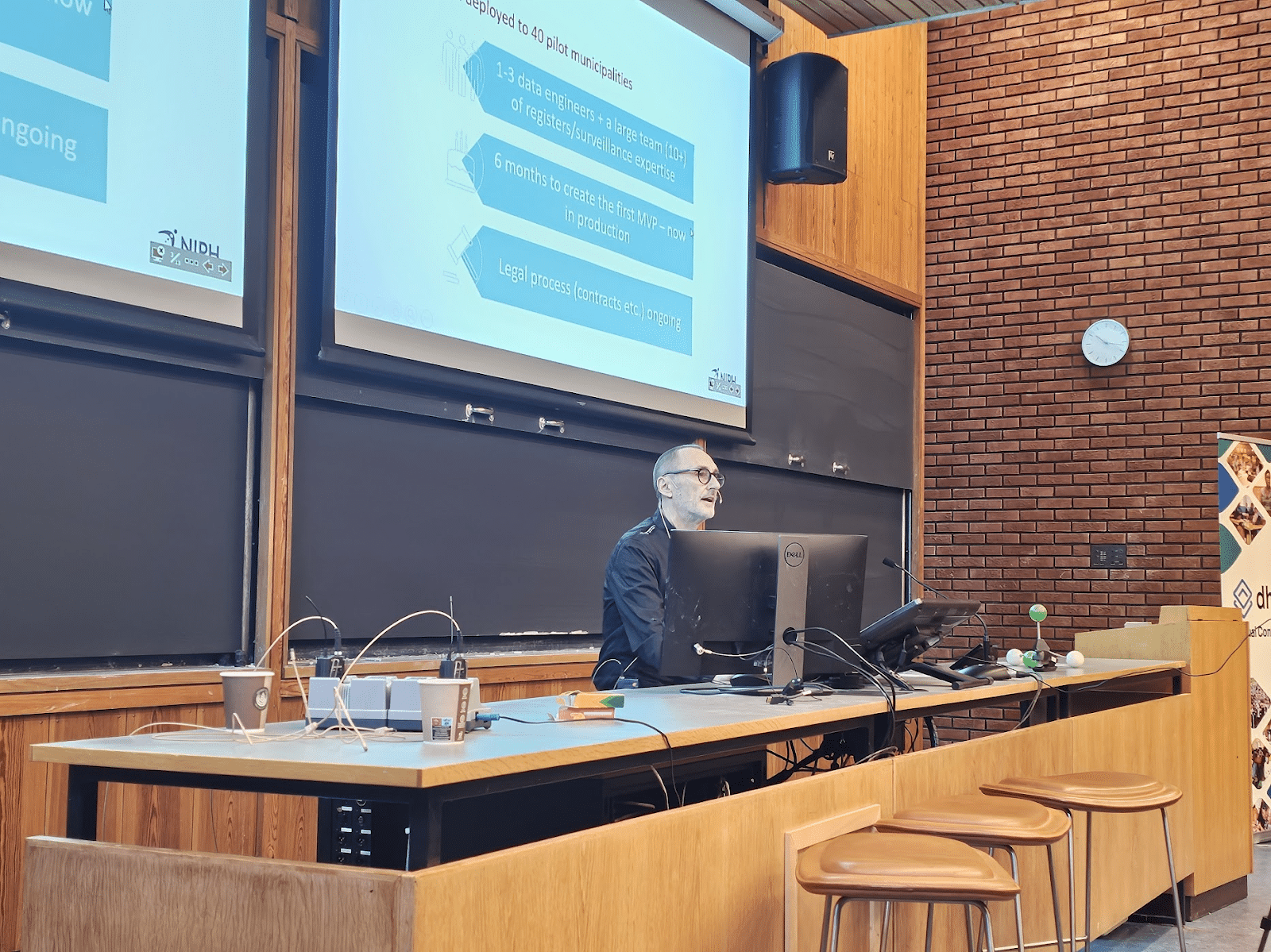
How DHIS2 – and a brand new vaccine – helped Niger beat a major meningitis outbreak
The new pentavalent meningococcal conjugate vaccine outflanked a swelling outbreak – but new ways of using a crucial information management tool delivered the vital assist.
At the height of 2024’s meningitis season, Niger was struck by an outbreak of meningococcal infection that would eventually affect more than 2,600 people. The country is one of 26 in the African meningitis belt, a large swathe of territory stretching from Senegal to Ethiopia that is often visited by large-scale epidemics. In these outbreaks, the disease – which targets the meninges, the thin lining surrounding the brain and spinal cord – has been known to kill one in ten of its victims and leave one in five patients to contend with life-long disabilities.
“Niger’s experience with DHIS2 serves as a replicable framework for other countries seeking to enhance their public health response capabilities.”
– Lorenzo Pezzoli, team lead, Epidemic Meningitis Control at the WHO in Geneva
But by May, the Ministry of Health (MoH) of Niger was hitting back, rolling out a new, powerful vaccine: the pentavalent meningococcal conjugate vaccine, known as Men5CV or MenFive.
The campaign was a success: after the vaccine’s deployment, no further cases were observed in the vaccinated areas of Niamey. As cases continued to crop up in surrounding, non-vaccinated districts in the northeast and south of Niger, the Ministry submitted a second request to the International Coordinating Group on Immunization (ICG) for additional doses from the Gavi-funded global MenFive stockpile, that would roll out in a second campaign in July.
The right tools
Two tools had proved invaluable to Niger’s success. The first was the jab. Prequalified by the World Health Organization in mid-2023, MenFive is set to be a game-changer in meningitis control. Its predecessor vaccine, MenAfriVac, had a revolutionary impact across the meningitis belt after it began rolling out in 2010 – but was only designed to protect against the highly prevalent meningitis A. The new vaccine has an expanded repertoire, protecting against five of the most common outbreak-prone serogroups of the meningococcal bacterium: strains A, C, W, Y and X.
The second tool was already familiar to Niger’s public health workers, but would be deployed in novel ways. DHIS2 is an open-source digital information system developed at the University of Oslo and first deployed in 2017. It has since been adopted in more than 70 countries to manage information related to immunization, disease surveillance and health statistics.
Effectively collating data amid a large-scale immunization campaign is no walk in the park. Under the pressured conditions of an outbreak response using a new vaccine, gathering the right data in time to make informed decisions is even harder. Putting DHIS2 digital systems to use amid the MenFive roll-out allowed campaign coordinators to assess the campaign’s progress in real time – rather than simply receiving data from supervisors at day’s end. Real-time information enables prompt intervention, which, in turn, allows the opportunity for more impactful decision-making.
“With large vaccination campaigns with over 3 million people covered in densely populated and rural areas, it was crucial to have an electronic tool to monitor in real time the progress of the campaign.”
– Dr Ibrahima Camara, WHO country office meningitis focal point.
Uncharted territory
It was only the second worldwide use of the MenFive vaccine, which meant it was particularly crucial to monitor the campaign closely for coverage and adverse events. A post-campaign coverage survey – critical for tracking both coverage and adverse events following immunization when any country conducts a mass vaccine introductions or campaign – was conducted using DHIS2, with a locally-customized tracker module to track individuals during the survey.
“As the campaigns were planned in the different districts, we had an increasing need for an electronic tool to monitor the campaign and the post-campaign coverage survey. DHIS2 is a tool that allows teams across government institutions and geographical levels to monitor activities in real time and efficiently.”
– Dr Joaquin Baruch, Technical Officer at the WHO in Geneva
Evolving uses
Though Niger has been using DHIS2 to track public health indicators for years, its use in surveillance is expanding, with its utility notably boosted by the current integration with STELab, a digital tool used to track laboratory specimens and collect case-based surveillance data.
This approach has succeeded in building a bridge between potentially siloed health system departments. In Niger, the DHIS2 system is hosted within the Directorate of Statistics at the Ministry of Health. While the Directorate of Immunization runs immunization services at the Ministry of Health, the Directorate of Surveillance and Epidemic Response (DSRE) takes charge of emergency vaccination campaigns. Moreover, coverage surveys are conducted by the National Institute for Statistics.
Using DHIS2 to monitor a campaign and conduct a coverage survey presented an excellent opportunity for working together across different government entities as well as with WHO.
“One of the advantages of DHIS2 is that it’s a tool already familiar to the Ministry of Health, and the fact that it’s used across divisions was a great opportunity to integrate.”
– Dr Aminatou Alambeye, Niamey Public Health Regional Director
“DHIS2 was used for the first time for the vaccination coverage survey of the pentavalent meningitis vaccine (Men5CV) campaign,” noted WHO’s Dr Camara. “Its use allowed real-time data collection and reduced data processing time. With an interactive dashboard, monitoring the teams in the field is straightforward.”
The survey needed to be large in order to be fit for purpose. Two hundred households in each vaccinated district needed to be surveyed. In Niamey alone, there were five such districts, amounting to 1,000 households to be interviewed by ten teams. Maps, dashboards, and questionnaires made DHIS2 an optimal tool for the coverage survey. The maps and the infographics helped the teams identify the areas that had to be surveyed and prioritize those parts of town that were lagging behind during the process.
“Digital systems make it easy for frontline surveyors and monitors to ensure high-quality work. Vaccination coverage impacts the introduction of a vaccine, so having accurate data in real time has the desired impact. In contrast to the normal paper-based method, this system allowed the work to be monitored and to have clean and accurate data for analysis.”
– Dr Elh. Ibrahim Tassiou, Director of surveillance and epidemic response
The use of DHIS2 during the survey was a notable success. Surveyors were equipped with tablets and efficiently collected real-time data. They monitored fieldwork in detail, logging the GPS location of areas surveyed, and made use of the ability to deliver real-time feedback to the supervision team.
“Shifting away from WhatsApp group chats can improve how we track information. During our morning meetings to review results, we can quickly see how things unfolded without wasting time sorting through various chat groups. With 2,000 households and multiple teams to manage, digital technology makes organising information much more efficient. If we were still relying on paper systems, it would have been impossible to review all the details promptly.”
– Dr Camara, WHO country office meningitis focal point
“It was remarkable to see the difference”
The success of the survey prompted Niger to deploy DHIS2 for the intra-campaign monitoring – conducted via traditional reporting methods in the May campaign – during the reactive vaccination campaign that kicked off on 4 July.
The Regional Director of Niamey’s Public Health Office emphasized the value of the tool’s familiarity among health workers, who use it regularly as part of the national routine health management information system: “DHIS2 is a familiar tool routinely used by operational-level health workers. Thus, its use was spontaneous by all actors at different levels during the campaign.”
During the July campaign, 1,444 teams were deployed to vaccinate 1,805,390 people in three regions.
“With the monitoring of the second campaign, we met every morning to go over the DHIS2 monitoring results. It was remarkable to see the difference in the ease of monitoring. We could see which teams were supervised and the common issues observed during the previous day. This led us to respond to the needs and quickly correct course when necessary.”
– Kalidou Moussa, National supervisor in Agadez region
A vision for the future
But even successful implementations have their challenges. The teams of vaccinators, surveyors, and supervisors had to be trained in the new uses of the tool, which required time and financial resources. Niger’s MoH needed support from the HISP team in West Africa to develop the modules, and took care of campaign monitoring.
In the future, the MoH team would benefit from training in the customization of DHIS2 modules, to provide for rapid scale-up of new campaigns or activities. Additionally, there is a need to advocate for including module customization and training on use within Gavi operational costs for vaccination campaigns. Doing so would help make the use of the DHIS2 software routine in outbreak response campaigns and surveys.
Other challenges were external to the health system. Niger is a vast country, with a largely rural population, and internet connectivity in the countryside is often too spotty to allow for seamless synchronization of data. While DHIS2 allowed the teams to collect the data offline, that data was then uploaded on a delay – not synchronizing until a given team reached a village with internet coverage. Vaccine deployment and monitoring were also challenging in some remote districts due to insecurity-driven inaccessibility – though effective risk mitigation measures did help many of those teams undertake their tasks in safety.
Looking forward, Niger’s health leaders envision integrated data flows from laboratories, case-based surveillance, and vaccination campaigns, allowing for evidence-based decisions that ultimately help to beat back meningitis. DHIS2 will play a crucial role in this integration, enabling parallel information systems to exchange information, as well as facilitating better data visualization, generating alerts and accelerating outbreak detection, investigation and confirmation. Additionally, it will streamline the submission of requests to access stockpiled vaccines through the International Coordinating Group (ICG), enhancing the country’s ability to respond to outbreaks in the nick of time.
“The advantages of using electronic tools (DHIS2) for surveillance and response include reducing the detection time for meningitis cases, reducing the confirmation time for epidemics, improving the quality of surveillance data with better timeliness, completeness and accuracy of data, reducing the time to submit ICG requests for organising reactive and preventive campaigns, reducing the risk of data loss in surveillance and increasing the country’s data storage capacity.”
– Dr Ibrahima Camara, WHO country office meningitis focal point.
DHIS2’s success as part of Niger’s 2024 meningitis vaccination campaigns demonstrates the potential of electronic surveillance tools to improve the reach and efficiency of public health services. As Niger continues to expand the use of DHIS2, the country is setting a precedent for the future of disease surveillance and epidemic response in the region, with an opportunity for integration into national policy changes, particularly the national immunization strategy.
“Niger’s experience with DHIS2 serves as a replicable framework for other countries seeking to enhance their public health response capabilities,” said Lorenzo Pezzoli, team lead, Epidemic Meningitis Control at the WHO in Geneva. “By adopting this scalable model, other countries can leverage the power of electronic surveillance and data-driven decision-making to strengthen their ability to prevent control epidemics of bacterial meningitis and other vaccine preventable diseases, swiftly and effectively.”
This article was originally published on Vaccines Work website, and is republished here with permission.


